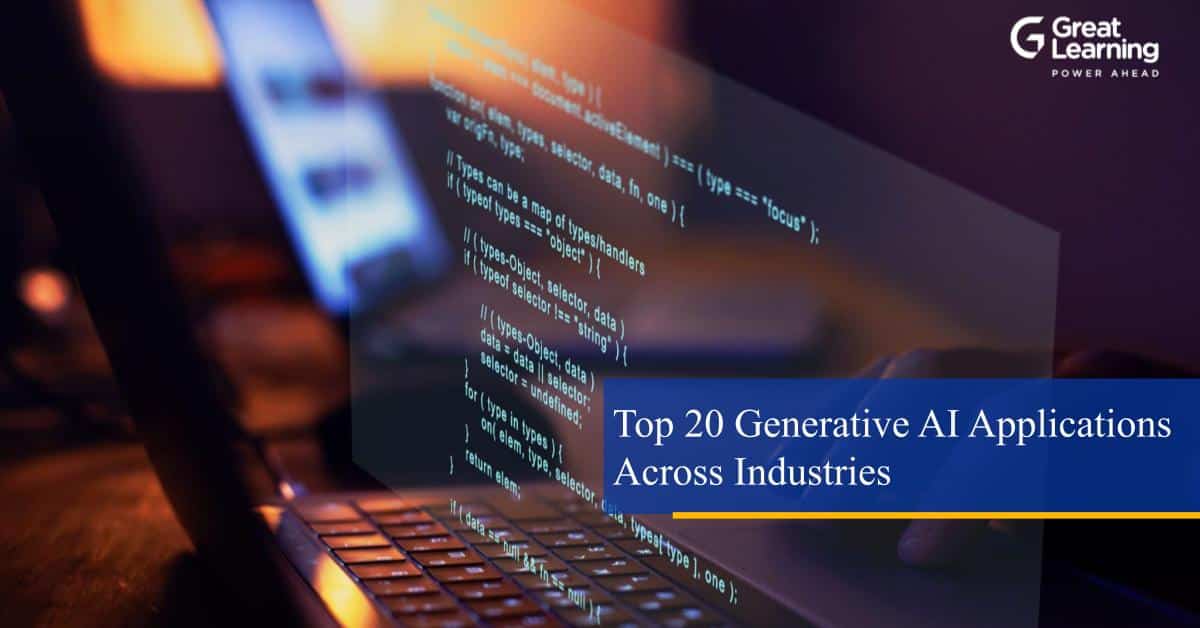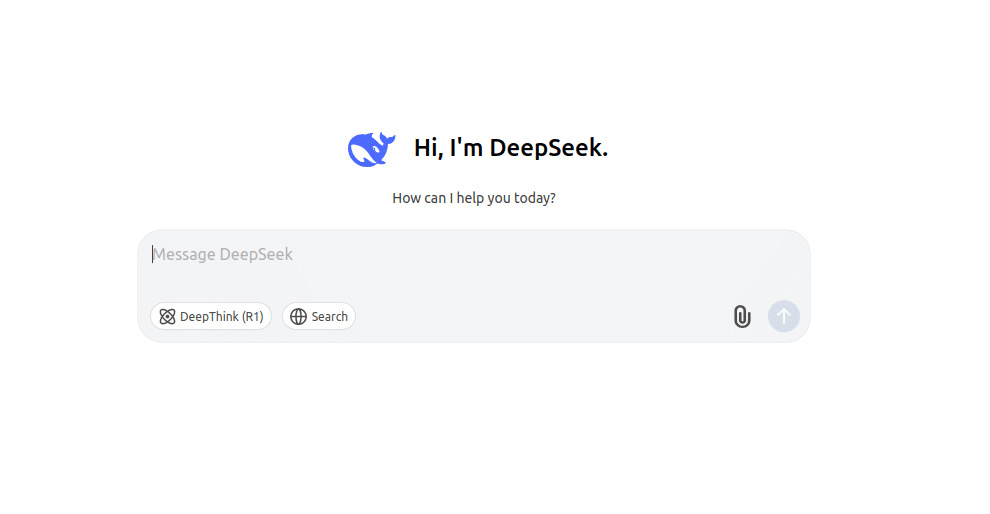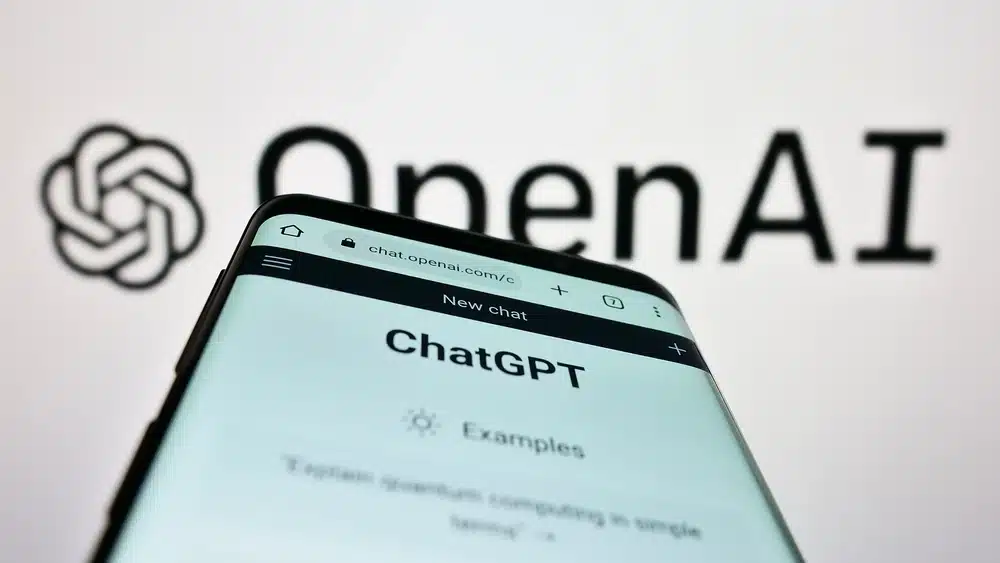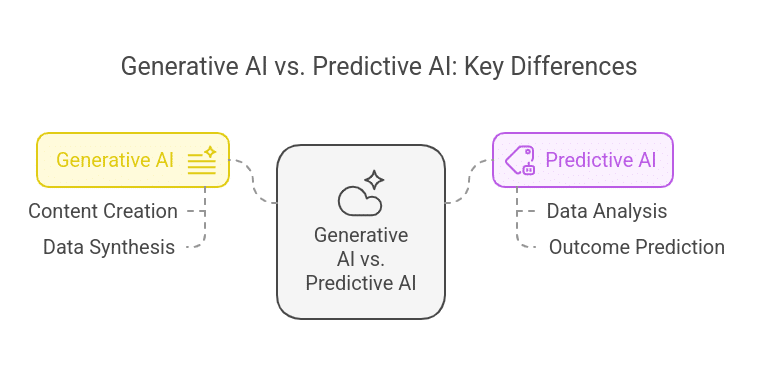Generative AI creates new things. It can produce text, images, code, and more. This technology is not just a future idea; it's being used today across many industries to solve practical problems. Instead of just talking about potential, this article shows you 18 concrete examples of how generative AI is working right now. You'll see how different fields are using it to work faster, create new products, and improve existing processes.
Free Generative AI for Beginners
Enroll in our free Generative AI course for beginners, covering AI fundamentals, machine learning, neural networks, deep learning, and more. Dive into the world of Generative AI today!
Marketing and Sales
1. Creating Ad Copy
Generative AI can write text for advertisements. You provide a prompt describing the product and target audience. The AI then generates multiple versions of ad copy. This helps marketing teams test different messages to see what works best.
- Here's how it works: A company inputs its product features and desired tone. The AI tool produces headlines and descriptions for social media ads. This helps you create ad variations faster.
- Example: Coca-Cola's "Create Real Magic" campaign used AI to generate artwork from brand assets, allowing creators to make their own versions for potential use on billboards.
2. Personalizing Email Campaigns
AI can create personalized emails for customers. It analyzes customer data like past purchases and browsing history. Then, it writes emails with product recommendations and messages that are relevant to each person.
- Here's how it works: An e-commerce store uses an AI tool that connects to its customer database. The tool drafts unique emails for different customer segments. This can lead to higher open rates.
- Example: Salesforce's Einstein 1 platform can auto-generate personalized emails for millions of users, which resulted in a 28% increase in engagement.
Read: Top AI Tools for Email Marketing
3. Generating Social Media Content
AI can create posts for social media. It can write captions, suggest relevant hashtags, and even design images. This helps businesses maintain an active presence on social platforms.
- Here's how it works: You give the AI a topic and the platform (like Instagram or LinkedIn). It generates a post with a caption and suggests popular hashtags. This helps you schedule content more efficiently.
- Example: Platforms like Ocoya use GPT-based models to create captions and find the best times to post based on audience behavior, boosting organic reach.
Read: How to Use AI for Content Creation
Free ChatGPT for Marketing Course
Enroll in our Free ChatGPT for Marketing Course and learn how to generate compelling content, personalized campaigns, and exceptional customer experiences using ChatGPT!
Software Development
4. Writing and Completing Code
Generative AI helps developers write code faster. It can generate code snippets or complete entire functions based on simple descriptions. This reduces the time spent on repetitive coding tasks.
- Here's how it works: A developer writes a comment describing a function. The AI tool then suggests the code to perform that function. This speeds up the development process.
- Example: GitHub Copilot provides real-time code suggestions and can complete functions based on comments or existing code.
Read: Vibe Coding in Software Development
5. Automating Software Testing
AI can automatically generate tests for software. It analyzes the code to create test cases that cover different scenarios. This helps find bugs and security flaws early in the development process.
- Here's how it works: An AI tool scans the application's code. It then writes unit tests and identifies potential edge cases. This helps ensure the software is reliable before release.
- Example: AI-powered testing tools can execute test cases at scale and flag bugs, allowing developers to address issues before they become larger problems.[Source]
6. Improving Code and Finding Bugs
AI tools can review existing code to suggest improvements. They can identify inefficiencies, find potential bugs, and suggest fixes. This helps maintain a clean and efficient codebase.
- Here's how it works: A developer runs an AI tool on their codebase. The tool analyzes the code and highlights areas that could be improved for better performance or readability.
- Example: GitHub Copilot can identify issues in code and suggest the correct fix directly within the code editor.
Free ChatGPT for Coders Course
Join the free ChatGPT for Coders course to boost your coding skills using ChatGPT. Learn coding, debugging, and more with expert guidance and practical exercises.
Healthcare
7. Accelerating Drug Discovery
Generative AI can design new molecules and simulate their interactions. This helps scientists identify promising drug candidates much faster. It speeds up the initial phases of drug development.
- Here's how it works: Researchers input data about a disease. The AI then generates models of new molecules that could potentially treat it. This reduces the time and cost of research.
- Example: Insilico Medicine uses generative AI to discover new drug compounds, quickening the development of treatments for diseases like cancer.
8. Creating Personalized Treatment Plans
AI analyzes a patient's medical history, genetic data, and lifestyle. Based on this information, it can suggest customized treatment plans. This helps doctors make more informed decisions for their patients.
- Here's how it works: A doctor inputs a patient's data into an AI system. The system compares this data to vast medical datasets and suggests a personalized therapy.
- Example: In oncology, AI can analyze a patient's genetic makeup to recommend the most effective cancer treatment, which can improve survival rates.
9. Enhancing Medical Imaging Analysis
Generative AI can improve the quality of medical images like X-rays and MRIs. It can reduce noise, sharpen images, and even generate new images to show how a disease might progress. This helps radiologists detect anomalies more accurately.
- Here's how it works: An AI model is trained on thousands of medical scans. It learns to enhance low-quality images or highlight potential areas of concern for the radiologist.
- Example: GE HealthCare is using generative AI to reduce scan noise in MRIs and CTs, shortening imaging times without losing detail.
Enroll in our Free AI in Healthcare Course to learn how AI and Machine Learning are transforming healthcare. Gain skills in deep learning, neural networks, and build a classification model to detect COVID-19 using X-ray images.
Finance
10. Automating Regulatory Compliance
The financial industry has many regulations. AI can monitor for changes in these regulations and automatically generate compliance reports. This helps companies stay up-to-date with legal requirements.
- Here's how it works: An AI tool scans regulatory updates from various sources. It then drafts reports to ensure the company's practices are compliant. This reduces manual work for compliance teams.
- Example: Global banks use generative AI to scan updates from regulatory bodies and create draft compliance reports in real time.
11. Personalizing Financial Advice
AI can act as an assistant for wealth managers. It helps create personalized investment strategies based on a client's goals and risk tolerance. It can also generate portfolio summaries.
- Here's how it works: A financial advisor uses an AI tool to analyze a client's financial data. The tool then suggests investment options and simulates potential outcomes.
- Example: Wells Fargo uses generative AI to suggest optimal investment strategies and create customized portfolios based on individual risk appetites.
12. Detecting Fraudulent Activities
AI models can analyze financial transactions to identify unusual patterns. This helps in detecting and preventing fraud. The AI learns what normal transaction behavior looks like and flags deviations.
- Here's how it works: A bank's AI system monitors transactions in real time. If it detects an activity that matches known fraud patterns, it alerts the bank.
- Example: Generative AI can be used to generate synthetic examples of fraudulent transactions to better train machine learning models to recognize them.
Free ChatGPT Course for Finance Professionals
Enroll in this ChatGPT for Finance Course to learn how to use AI tools like ChatGPT for personal finance management, investment strategies, retirement planning, and more.
Entertainment and Media
13. Generating and Editing Video Content
AI can create new video content or help with editing. It can generate visual effects, add graphics, or create highlight reels from longer videos.
- Here's how it works: A user provides a text prompt or an existing video. The AI can then create a new video or suggest edits to the existing one.
- Example: Scott Man, a Hollywood director, uses Generative AI to dub movies into different languages, matching the actor's voice for a more natural result.
Read: Best AI Video Generator and Editing Tools
14. Composing Music and Sound Effects
Generative AI can create original music scores and sound effects. This is useful for content creators who need background music for videos or games. It can also help musicians experiment with new ideas.
- Here's how it works: A user specifies a genre, mood, and length. The AI then generates a unique piece of music that fits the description.
- Example: Google's MusicLM can help with composing melodies, and some musicians use platforms like WaveAI to assist in the songwriting process.
15. Creating Digital Avatars and Characters
AI can generate realistic virtual avatars and characters for use in movies, games, and virtual experiences. This reduces the cost and time associated with hiring actors or creating digital characters from scratch.
- Here's how it works: A designer provides specifications for a character. The AI then generates a 3D model of that character.
- Example: Digital characters created by AI can be used in various media, saving production costs on hiring professional actors.
Manufacturing and Automotive
16. Designing Products and Parts
Generative AI can create multiple design options for new products. Engineers provide the constraints, such as materials and size, and the AI generates innovative designs that meet those requirements. This accelerates the design process.
- Here's how it works: An engineer inputs the requirements for a car part. The AI then produces hundreds of design variations for the engineer to evaluate.
- Example: Generative AI can quickly produce lifelike 3D car models from just a few parameters, allowing designers to visualize and refine concepts faster.
17. Optimizing the Supply Chain
AI can analyze large datasets to predict fluctuations in demand and optimize logistics. This helps manufacturers plan production more efficiently and avoid supply chain disruptions.
- Here's how it works: An AI system analyzes historical sales data, weather patterns, and economic indicators. It then forecasts future demand for a product, allowing the company to adjust production and inventory.
- Example: AI can identify and resolve supply chain issues by analyzing transactional data and suggesting optimized delivery schedules.
Education
18. Creating Personalized Learning Materials
Generative AI can develop customized educational content for students. It can create quizzes, lesson plans, and practice exercises tailored to an individual's learning pace and style. This helps make education more adaptive.
- Here's how it works: A teacher uses an AI tool to generate different versions of a worksheet. The tool can adjust the difficulty of the questions based on each student's performance.
- Example: Duolingo, a language-learning app, uses AI to customize lessons to each learner's skill level and pace.
Conclusion
As these examples show, generative AI is a practical tool that businesses are using today. Its applications are not confined to one or two industries. From designing life-saving drugs to making legal research more efficient and creating personalized advertisements, the technology provides specific solutions to real problems.
The focus is shifting from what generative AI could do to what it is doing to make work simpler and more effective. As its capabilities grow, this technology will become a standard part of more business operations.






